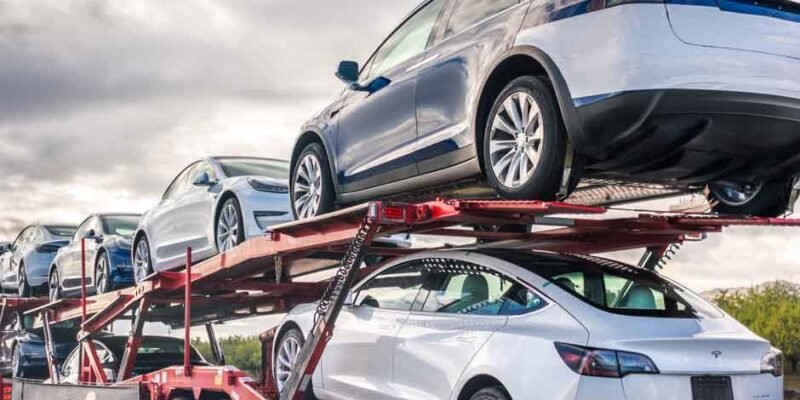Auto shipping, a convenient solution for transporting vehicles, involves a countdown to delivery marked by various key aspects. As your vehicle embarks on this journey, there are eight distinct things you can expect during the process. From the initial preparations to the final delivery, understanding these aspects will help you navigate the auto-shipping experience seamlessly.
1. Pre-Shipment Inspection
Pre-shipment inspections are essential before loading your vehicle into a carrier. The car shipping firm will inspect and record your vehicle for damage. A baseline examination ensures that any new transportation damages are discovered and rectified. Attending this procedure is advised. You are communicating with the shipping firm and recording complaints. This thorough check resolves disagreements and guarantees shipment transparency.
2. Choosing the Right Carrier
Selecting the appropriate type of carrier is a pivotal decision in the car shipping process. Open and enclosed carriers are the two main options. Each with its own set of advantages and disadvantages. Open carriers are cost-effective but expose your vehicle to the elements. On the other hand, enclosed carriers protect from weather conditions and road debris but are generally more expensive. Your choice should align with your vehicle’s value, the shipping budget, and the level of protection you deem necessary for your vehicle.
3. Understanding Transit Time
The duration of transit is a crucial aspect of auto shipping. Various factors, such as the distance between the pickup and delivery locations, traffic conditions, and the specific route taken, influence the overall transit time. While shipping estimations are provided, unexpected delays can occur due to weather, mechanical issues, or other unforeseen circumstances. It’s essential to factor in potential delays when planning your vehicle’s shipment. Ensuring that you have realistic expectations regarding the delivery timeframe.
4. Insurance Coverage
Auto shipping typically includes insurance coverage to protect your vehicle during transit. However, the extent of coverage can vary among different shipping companies. It’s crucial to thoroughly review the insurance policy and understand the coverage limits and conditions. In the unfortunate event of any damage or loss, having comprehensive insurance coverage will provide financial protection. Before finalizing the shipping arrangements. Confirm the insurance details and inquire about any additional coverage options that can be available to safeguard your investment.
5. Tracking and Communication
As delivery approaches, knowing your vehicle’s position and condition is crucial. Trustworthy car shipping businesses enable you to track your vehicle in real-time. Also important is regular shipping company communication. Maintaining good communication allows you to obtain timely information and handle any transportation difficulties. A transparent and responsive shipping business makes the shipping procedure easier and gives peace of mind.
6. Delivery Process
As the delivery date approaches, the shipping company will coordinate with you to finalize the details. Clear communication about the delivery location and any specific instructions is essential to ensure a smooth handover. Be prepared to inspect your vehicle upon arrival. Comparing its condition to the pre-shipment inspection report. Document any discrepancies and communicate them to the shipping company promptly. A well-organized delivery process contributes to a positive overall experience and helps address any issues in a timely manner.
7. Potential Additional Fees
You may have received a quote for the auto-shipping service. It’s essential to be aware of potential additional fees that can arise. These fees could include charges for changes in the delivery location, storage fees if there are delays in picking up the vehicle or fees for additional services requested during transit. Understanding the potential for additional costs allows you to budget effectively and avoid unexpected financial surprises at the conclusion of the shipping process.
8. Post-Delivery Follow-Up
After your vehicle has been successfully delivered, it’s prudent to engage in post-delivery follow-up. Take the time to inspect your vehicle thoroughly and ensure that it arrives in the expected condition. If any issues arise, document them promptly and communicate with the shipping company. Additionally, providing feedback on your overall experience can be valuable for both you and the company. Contributing to improvements in their services. Post-delivery follow-up ensures that any lingering concerns are addressed and that the auto-shipping process is not only complete but satisfactory.
Conclusion
In the countdown to auto delivery, being well-informed about the process is key to a successful and stress-free experience. From the pre-shipment inspection to the final delivery process, each step plays a crucial role in ensuring the safety and condition of your vehicle. By choosing the right carrier, understanding transit times, and staying informed about insurance coverage and potential additional fees, you can navigate the auto-shipping process with confidence. A proactive approach, clear communication, and attention to detail contribute to a seamless and satisfactory auto-shipping experience.















Comments